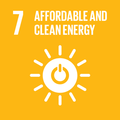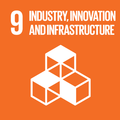Ennesys use CO2, sunlight and microalgae to purify wastewater, produce clean energy, and produce fertiliser.
In opaque bioreactors placed on building roofs or façades, algae grow in sunlight, fed by nutrients in wastewater. Water is purified to international standards allowing for irrigation and sanitation uses, and the algal biomass increases. After separation, the algal biomass can be converted to biogas and bio-boosting fertiliser.
Depending on the installation, the tubular bioreactors can also be incorporated into the building’s heating system, providing solar thermal qualities to improve their thermal behaviour and reduce heating costs.
Why you should care
Combining wastewater purification and clean energy production, Ennesys’ technology allows city districts to recycle their organic waste and produce energy to cover local consumption. The low cost of the energy generated and the wastewater treated makes the technology scalable to other settings, particularly where decentralised wastewater treatment is required.
How the Global Goals are addressed

Affordable and Clean Energy
Ennesys Environmental Energy Systems’ water purification, using CO2, sunlight, and microalgae, and energy production utilises sunshine to drive the algal photosynthesis.

Industry, Innovation, and Infrastructure
This system uses waste water and CO2 as primary inputs, which are often the outputs from industrial activities. By retrofitting the infrastructure, this solution helps make industry more sustainable.

Climate Action
Using CO2 as an input and creating carbon-neutral biogas both help to reduce greenhouse gas emissions, ultimately helping to limit effects of climate change.


